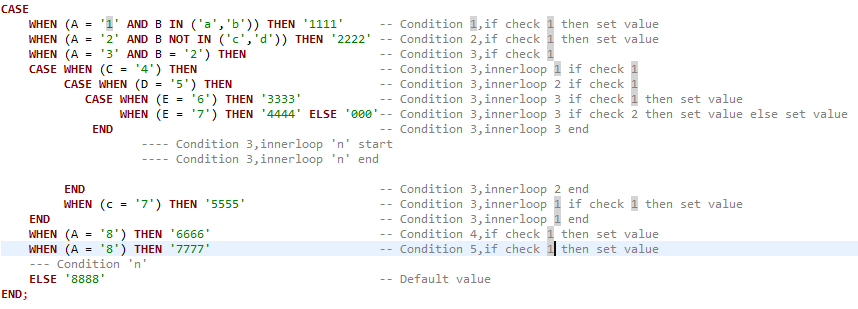I'm writing an SQL Query, where a few of the columns returned need to be calculated depending on quite a lot of conditions.
I'm currently using nested case statements, but its getting messy. Is there a better (more organised and/or readable) way?
(I am using Microsoft SQL Server, 2005)
A simplified example:
SELECT
col1,
col2,
col3,
CASE
WHEN condition
THEN
CASE
WHEN condition1
THEN
CASE
WHEN condition2
THEN calculation1
ELSE calculation2
END
ELSE
CASE
WHEN condition2
THEN calculation3
ELSE calculation4
END
END
ELSE
CASE
WHEN condition1
THEN
CASE
WHEN condition2
THEN calculation5
ELSE calculation6
END
ELSE
CASE
WHEN condition2
THEN calculation7
ELSE calculation8
END
END
END AS 'calculatedcol1',
col4,
col5 -- etc
FROM table


CASE WHEN– Homoeo